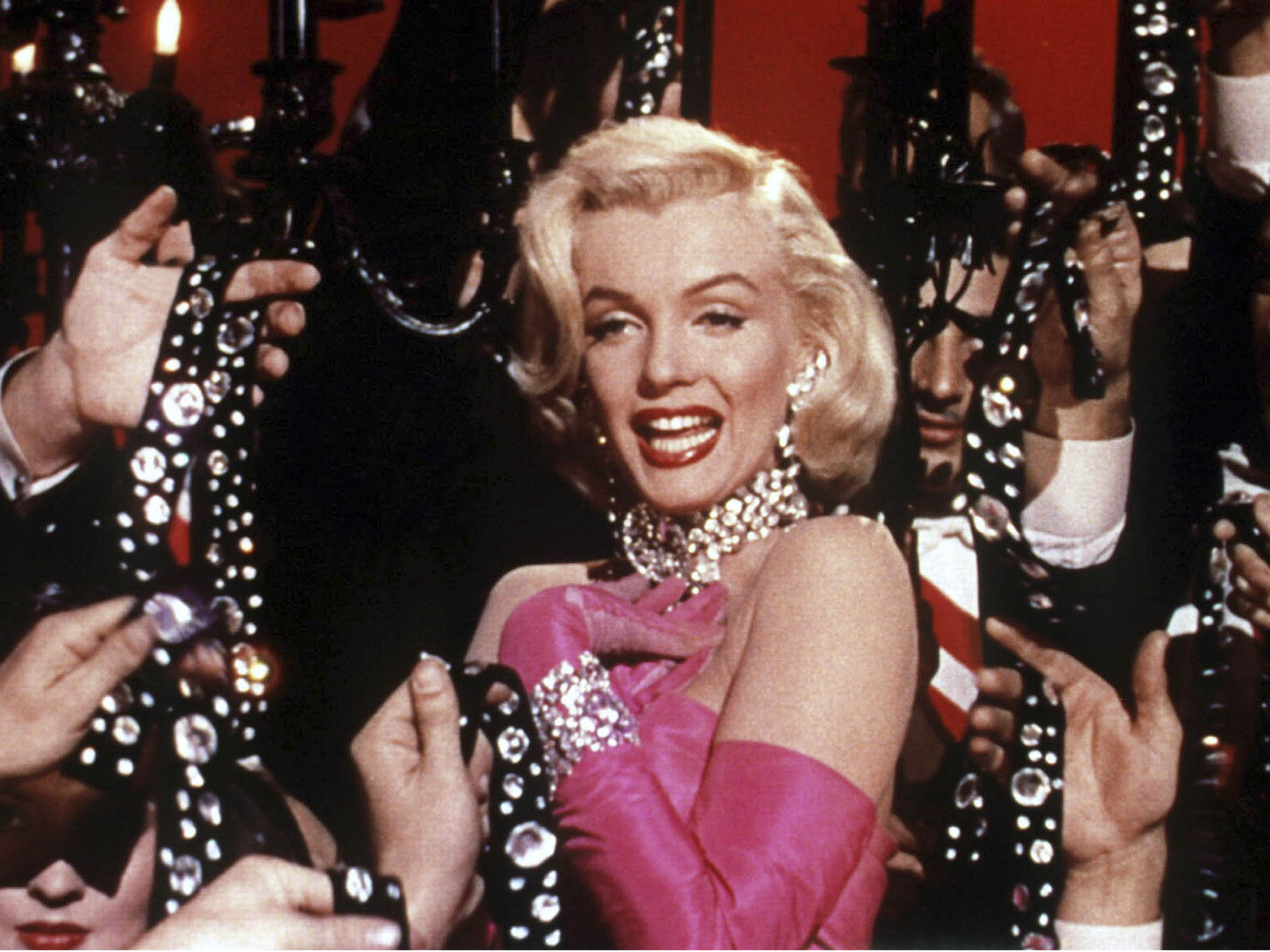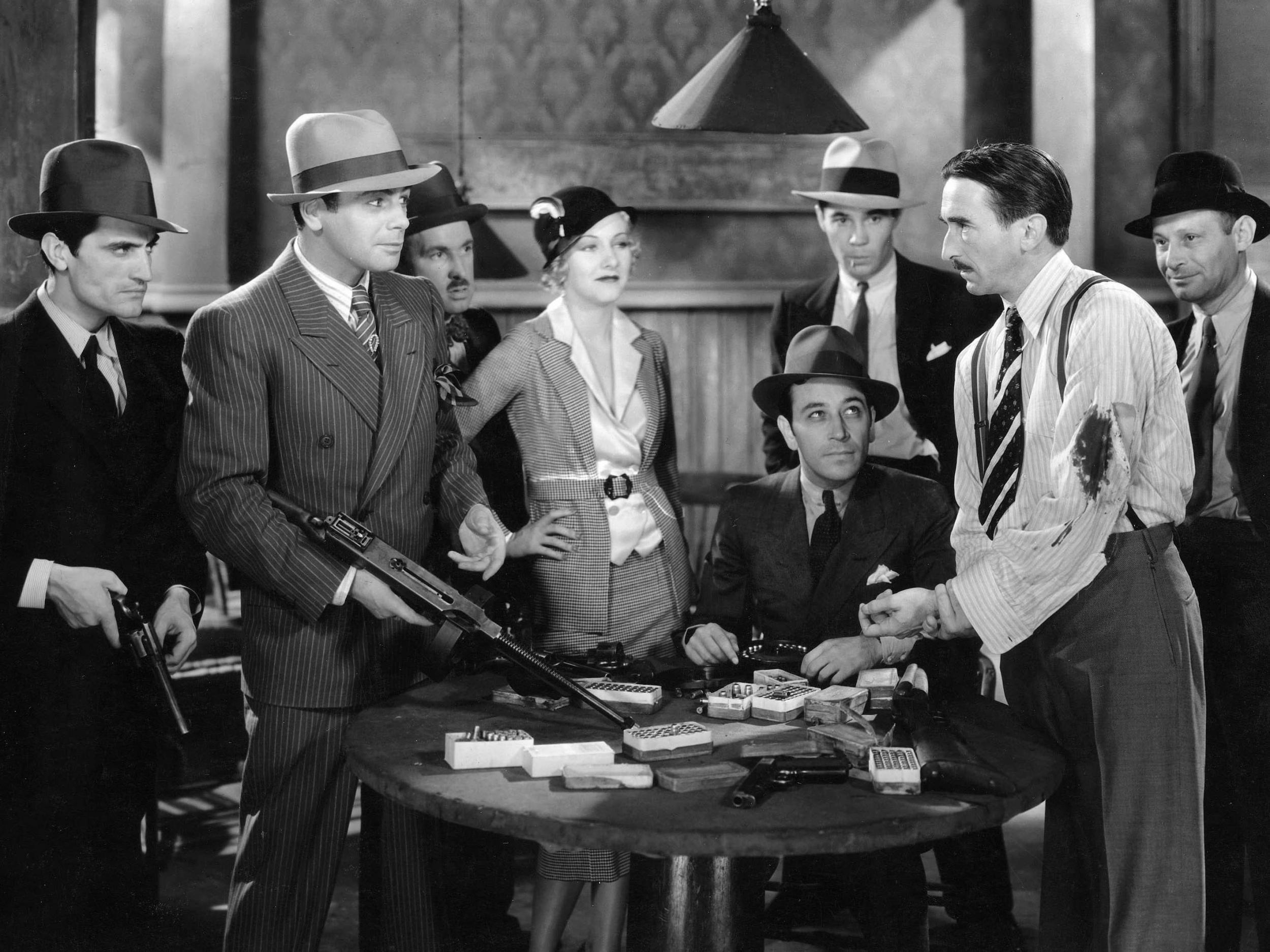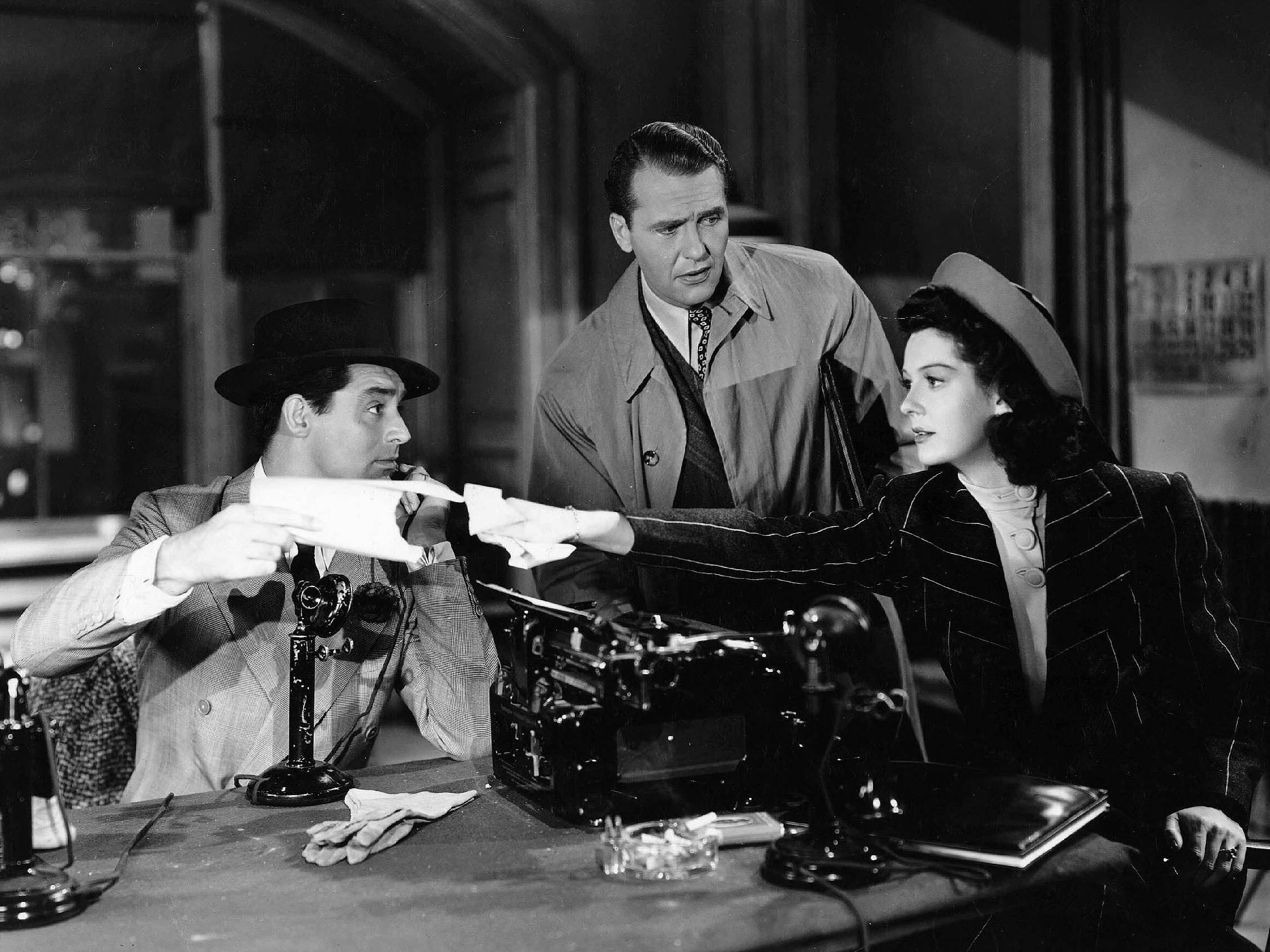Howard Hawks' 10 greatest films: From 'Gentlemen Prefer Blondes' to 'Scarface'
Despite boasting a body of work to rival Hitchcock, Howard Hawks' oeuvre remains lesser known and under-appreciated – but the director's visions of male friendship, strong women and teamwork excel across pretty much every movie genre even today

Your support helps us to tell the story
From reproductive rights to climate change to Big Tech, The Independent is on the ground when the story is developing. Whether it's investigating the financials of Elon Musk's pro-Trump PAC or producing our latest documentary, 'The A Word', which shines a light on the American women fighting for reproductive rights, we know how important it is to parse out the facts from the messaging.
At such a critical moment in US history, we need reporters on the ground. Your donation allows us to keep sending journalists to speak to both sides of the story.
The Independent is trusted by Americans across the entire political spectrum. And unlike many other quality news outlets, we choose not to lock Americans out of our reporting and analysis with paywalls. We believe quality journalism should be available to everyone, paid for by those who can afford it.
Your support makes all the difference.Seventy years ago this week, the western Red River, starring John Wayne, was released. It was directed by Howard Hawks, arguably the most versatile director from Hollywood’s golden age. But he was much more than a good all-rounder, Hawks excelled in just about every major movie genre imaginable.
And yet, for all his achievements, and a legacy of wonderful films – a body of work that rivals any of the great directors, from Ford to Hitchcock, Welles to Wilder – Hawks was, and in some ways remains, lesser known and under appreciated. Even those with no more than a passing interest in movies will know a Hitchcock film when they see it, or recognise a John Ford western. But although he was fond of a soundbite – “A good movie is three good scenes and no bad scenes” – Hawks never really bought into the cult of the director. He preferred to let his films – with recurring themes of male friendship, teamwork, strong women, and getting the job done in a professional manner – speak for themselves.
But Hawks also had a refined sense of the absurd, even in his more serious films, and often had pompous heroes emasculated by womanly wile. With Hawks, the filmmaking emphasis was usually on speed, in action and dialogue. The director said, in a mild rebuke of Sam Peckinpah’s The Wild Bunch – with its slow-motion ballet of bullets and blood – that in his movies, the violence was over so quickly the viewer hardly realised it had happened. Watch some of Hawks’ comedies, like His Girl Friday, and marvel at the sheer pace of it all.
Hawks was only nominated once for an Oscar, that versatility perhaps working against him, but there are at the very least half a dozen classics in the Hawks canon. And for an idea of just how great the filmmaker was, just take a look at the films that don’t make this list – Monkey Business, Sergeant York, Twentieth Century, El Dorado, Ball of Fire – not to mention The Thing From Another World, the classic Cold War horror film Hawks may or may not have directed. Hawks himself would probably have rejected the auteur status his work has attracted, but there’s no doubt the following ten films contain the very personal values and themes of a unique director. Try and view as many of them as you can. You won’t be disappointed.
10. I Was a Male War Bride (1949)
A full 10 years before Billy Wilder challenged the censors by having Jack Lemmon and Tony Curtis masquerade as women in Some Like it Hot, Hawks did likewise with one of his favourite leading men, Cary Grant. The star plays a French Army officer in post-war Germany, frustrated by official bureaucracy which prevents him consummating his marriage to his new bride, a US women’s army officer. Eventually, the only way the pair can get to the US is for Grant to dress as a woman. Much hilarity ensues from his humiliation, and the premise isn’t as daft as you may think, as it was based on a true story. Grant does indeed don drag at the tail end – literally, as a horse’s tail was used for his wig. The shoot seemed jinxed at one point, with many of the cast and crew succumbing to various ailments. Grant became seriously ill with hepatitis and jaundice, co-star Ann Sheridan contracted pneumonia, and Hawks himself had a bad case of hives. But Grant reckoned I Was a Male War Bride was one of his best films, and it ranks as a terrific example of Hawks’ flair for the ridiculous.
9. Gentlemen Prefer Blondes (1953)
In this much-loved musical comedy, featuring Marilyn Monroe’s iconic “Diamonds Are a Girl’s Best Friend” number, Monroe and Jane Russell are women from Little Rock who travel to France on a cruise ship on the hunt for husbands. Hawks may have seemed an unlikely choice to direct a musical; indeed, he left much of the filming of the musical numbers to choreographer Jack Cole. But his patience with Monroe, enduring the foibles and insecurities that would characterise her career, allowed her to shine in a film in which her legend really took root. And don’t underestimate Russell’s contribution as the typically strong Hawks woman, a perfect counterpoint to Monroe’s innocent sexuality. Movie lore has it that, when Monroe and the statuesque Russell participated in the time-honoured publicity stunt of placing prints of their hands and feet in wet cement outside Grauman’s Chinese Theatre in Hollywood, Monroe suggested her behind and Russell’s breasts were a better option.

8. To Have and Have Not (1944)
Hawks was very much a man’s man, and friend to such literary giants as William Faulkner and Ernest Hemingway. To Have and Have Not came about after Hawks, trying to persuade Hemingway to write for the silver screen, told him he could make a movie out of the author’s worst book. Hemingway never did write for the movies and ironically it was Faulkner, who had no qualms about taking the Hollywood dollar, who co-wrote the script for a film more Casablanca than Hemingway. The wartime plot is incidental, and although career scene-stealer Walter Brennan is on board, To Have and Have Not is all about the pairing of Humphrey Bogart and Lauren Bacall – in her first film – as they struck sparks off one another on and off screen. The pair fell in love while making the movie and Hawks – who had discovered Bacall and nursed her, Svengali-like during the shoot as well as being infatuated with her – could only brood on the sidelines as he filmed their sizzling scenes.
7. Scarface (1932)
Long recognised as the exemplar of the 1930s gangster genre, Scarface was hugely influential and remains impressive today. It is the rise-and-fall account of Tony Camonte – a thinly disguised Al Capone – with Paul Muni, one of the great, almost forgotten stars of the era, eviscerating the scenery. Produced in tandem with the other Howard on-the-loose in Hollywood at the time – Hughes – Scarface was incredibly violent and featured a heavily implied incestuous relationship between the mobster and his sister. Even in the pre production code era, this led to run-ins with the censors, and scenes had to be altered and a new ending shot to show Camonte getting his just deserts. That didn’t appease the censors either, so the Howards eventually stuck to the original. The controversy over Scarface‘s brutal content led to Hughes withdrawing the film from theatres, and it wasn’t released again until after his death.
6. Only Angels Have Wings (1939)
This is the definitive Howard Hawks movie, with Grant as the boss of a rickety air-freight service in South America. The pilots know every flight they take over the fog-enveloped Andes may be their last, and the burden falls on Grant to make life or death decisions. The only way this group of men can deal with the situation is through a superficial, dispassionate indifference. But that all changes with the arrival of a showgirl who falls for Grant, and a disgraced pilot and his wife, who dumped Grant years earlier. It’s a classic Hawks scenario – the men are judged on how good a job they do, with the situation complicated by a strong, independent woman. With heart-stopping flying sequences, a genuinely moving ending, and Hawks’ auteur style really beginning to develop, Only Angels Have Wings, at almost 80 years old, still thrills and soars.

Watch Apple TV+ free for 7 days
New subscribers only. £8.99/mo. after free trial. Plan auto-renews until cancelled

Watch Apple TV+ free for 7 days
New subscribers only. £8.99/mo. after free trial. Plan auto-renews until cancelled
5. Rio Bravo (1959)
Hawks famously disliked High Noon, finding the scenario of Gary Cooper running around town asking for help against the bad guys ridiculous. Rio Bravo, Hawks’ last great film, was his riposte. Wayne, as the sheriff, turns down help from “well meaning amateurs” and is left with a drunk, a callow youth and a crippled old man to face an army of bad guys – plus, of course, the classic Hawksian woman in Angie Dickinson, who provides the glue that holds Wayne’s motley crew of Dean Martin, Ricky Nelson and Brennan together. In true Hawks style, with his recurring themes of male comradeship and professionalism to the fore, the unlikely alliance get the job done. For Rio Bravo, Hawks abandoned the epic sweep of his classic western, Red River, for a more confined setting. Unusually for a Hawks film, Rio Bravo is much more leisurely paced, but it is all the better for it, and repays repeated viewing.

4. Bringing Up Baby (1938)
In the first of his five films with Grant – surely one of the finest director-actor partnerships in the history of cinema – Hawks refined and perfected the screwball comedy genre which he had virtually invented with 1934’s Twentieth Century. Grant is the stuffed shirt paleontologist pursued by daffy Katherine Hepburn, who happens to own a pet leopard – the baby of the title – in this cherished, breakneck paced classic which, amazingly, bombed at the box office. Grant and Hepburn are wonderful together and the film features a tremendous supporting cast of Hollywood’s finest character actors. There are countless hilarious moments, none better than the scene where Hepburn loses the back of her dress and Grant has to cover it up.
3. Red River (1948)
Hawks came late to the western but when he took the plunge he fashioned an epic masterpiece which chronicles a pioneering 1,000-mile cattle drive in the old west, taking in Indian attacks, river crossings and stampedes. The film’s opening 20 minutes – possibly the greatest in any western – brilliantly sets the scene. In his movie debut, Montgomery Clift excels, as does Wayne as the obsessive, tyrannical rancher determined to see a cattle drive through to the bitter end, even if it means killing the foster son (Clift) who takes his herd away. Wayne’s towering performance revealed hitherto unsuspected depths and reignited the interest of the actor’s mentor, Ford, in him. Hawks only made a handful of westerns, most of them with Wayne, but three – Rio Bravo, its autumnal remake El Dorado (1966), and Red River – especially define all that we love about the genre.
2. The Big Sleep (1946)
One of Hawks’ main credos was, “Don’t be too logical – just make great scenes”, and that certainly applied to The Big Sleep, one of the greatest, yet most tenuous of the film noirs. The Big Sleep is based on Raymond Chandler’s novel of the same name, the convoluted plot of which famously flummoxed even the author himself. During filming, Chandler was asked who committed a particular murder. He couldn’t remember, not that Hawks cared. He knew he had cinematic gold, with a brilliant script and Bogart as many people’s ideal Philip Marlowe, reprising his sparkling on-screen chemistry from To Have and Have Not with soon-to-be-wife Bacall. Having gotten over his infatuation with the leading lady, Hawks placed as much emphasis on the Bogart-Bacall romance as the familiar noir tropes, with innuendo-laden dialogue between the pair that somehow evaded the censor’s wrath. Chandler was delighted with the finished product, and so was Hawks. Jack Warner, head of Warner Brothers studios, had given him $50,000 to buy the rights of the novel from Chandler. Legend has it Hawks gave Chandler just $5,000 and pocketed the rest. No wonder then, that Hawks described The Big Sleep thus: “It’s a movie that holds out its hand for a right turn signal, then takes a left.”
1. His Girl Friday (1940)
Hawks’ greatest film is an inspired remake of 1931’s The Front Page, itself taken from the original stage play by former journalists Ben Hecht and Charles MacArthur. His Girl Friday has Grant as Walter Burns, the type of Machiavellian newspaper editor who makes Duncan Allen from BBC drama Press seem like George Dent from Drop the Dead Donkey. Hawks’ genius was to subvert the character of Hildy Johnson, the hotshot reporter from the original. Hildy is now a woman – a brilliant Rosalind Russell – formerly married to Burns, and the editor will stop at nothing to prevent her leaving the newspaper business to marry that guy who looks like Ralph Bellamy – who in a nice in-joke is played by... Ralph Bellamy. The director’s other inspired move was the famous Hawksian crosstalk, where he added unnecessary words of dialogue at the beginning and end of sentences so characters would overlap when talking, and the result was the fastest, and arguably greatest comedy film ever made, which also manages a few scathing asides at the press.
Join our commenting forum
Join thought-provoking conversations, follow other Independent readers and see their replies
Comments